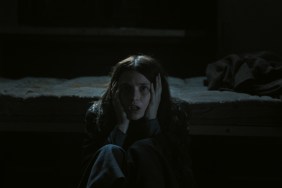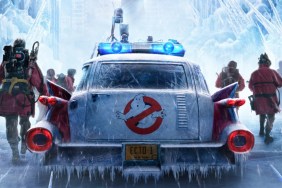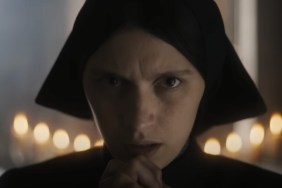
I know, this is the Internet and the immediate reaction to such a question as I pose in the headline is, “Hell no! Censorship sucks! Down with the man!” But this isn’t that kind of a conversation. I’m with you 100%. I hate censorship, but there is something to be said for the creativity censorship imbues into artists of all crafts.
Censorship in movies has evolved over the years, from the times when movies needed to be approved by a governing board before they could be exhibited, to today where they receive a specific rating for their content. While the former meant a filmmaker may have to cut their film to get approval, is the latter necessarily better?
Take for example the recent NC-17 rating for Blue Valentine that had to be appealed down to an R-rating. Then there’s the R-rating The King’s Speech received due to a single profanity filled 60 seconds of the film’s two hour running time. The difference between then and now is that a filmmaker doesn’t need to cut his/her movie to be approved, they can leave it as is. But they may have to settle for a higher MPAA rating in the process thus costing the studio money as certain people won’t go see, or take their families to, R-rated films and some exhibitors won’t even show NC-17 rated films.
I think most of us will agree Blue Valentine should have always been rated R and The King’s Speech could have been, and probably should have been, rated PG-13. However, that’s not the issue I’m here to discuss. Both were able to hit theaters as their directors originally intended them to be seen. Thus, in terms of freedom of expression, today’s rating system is obviously an improvement. But in terms of eliciting more creative ways of telling a story, can we agree it isn’t exactly helping? Especially when we get out of the realm of independent cinema.
This question came to me while I was watching the special features on Criterion’s recently released Blu-ray edition of The Double Life of Veronique in which director Krzysztof Kieslowski refers to the days of “real and tough” censorship using a skiing metaphor in a 1991 interview:
Because of censorship, writers, theater directors and filmmakers communicated with the audience despite the censors. Censorship imposed such limits that we had to find ways to make the audience understand us but not the censors.
It was a game, a kind of ski slalom. They positioned the poles, and we had to get around them. They positioned the poles more and more cleverly, and we skied better and better and got around them.
This was how we communicated. We sent out signals, and the audience received them. The censors were helpless because they didn’t catch the signals.
It created a bond, and a very comfortable situation. Or audience understood us better than we had anticipated… They understood our intentions and identified with them. We were all against the system — the audience and the filmmakers. That’s why we understood each other so well.
Instead of complaining about censorship, Kieslowski found a way to use it to his advantage. It seems to have invigorated him creatively. It’s only the absence of those obstacles that seems to frustrate him. “Now we have no censorship,” he said. “So the whole game, that ability to understand the underlying intention, has ceased to exist.”
With the absence of subtlety, movies lose their mystery and audiences seem to be less and less interested in searching for answers. Audiences need not try and decipher what they see on screen for themselves as filmmakers have lost the ability to navigate the landscape and are instead able to ski straight down the mountain. What pains me is when I hear people upset when a film doesn’t offer them all the answers, such as a couple that recently told me they didn’t like Inception. They were upset they it wasn’t more straight forward and I wanted to scream at them, “That’s what makes it so great!” It’s definitely a new era, but thankfully I get the impression people are more and more interested in films that both challenge and entertain them than those that simply lay it all out on the table.
In terms of how things used to be, I came across an article written by TIME’s Richard Corliss concerning the response to 1934’s production code, which forced studios to attempt to sanitize their projects as they came under greater scrutiny primarily by the new Catholic Church organization The Legion of Decency. Corliss says in the wake of the production code “filmmakers evolved a new ‘code,’ one that traded starkness for subtlety. Audiences quickly learned this covert language in which a woman’s knowing smile was its own double entendre, and a kiss was never just a kiss.”
You’ll note the period we’re now talking about makes up for the often referred to Golden Age of Hollywood. You look up the era at Wikipedia and they reference several films made during the years following the institution of the Production Code Administration. Films such as Citizen Kane, The Wizard of Oz, Gone with the Wind, Stagecoach, Mr. Smith Goes to Washington, Casablanca, It’s a Wonderful Life, It Happened One Night, Some Like It Hot, All About Eve, The Searchers, Bringing Up Baby, North by Northwest, Rebel Without a Cause, Double Indemnity, Mutiny on the Bounty, City Lights, Red River, The Bishop’s Wife, Singin’ in the Rain, My Man Godfrey, Goodbye Mr. Chips, Roman Holiday and Sabrina.
The Golden Age of Hollywood is said to have ended in the 1960s. Guess what happened at that time. That’s right, new head of the MPAA, Jack Valenti deemed the current Hays Code as out of date and instituted the MPAA ratings system still used to this day. From that point forward the ratings changed over the years but the effect didn’t as we saw the addition of the PG rating in 1970, the addition of the PG-13 in 1984 and X being replaced by NC-17 in 1990.
Slowly censorship stepped aside as arbitrary labels were placed on films deeming them suitable for certain audiences based on how a group of people judged their content. Censorship became a marketing tool rather than a creative tool. A PG rating said one thing to a parent, a PG-13 said another and once you get up to the R and NC-17 ratings you may as well begin reconsidering the number of people that are going to see your film.
The films I listed above as classics of the Golden Age all came as a result of the studio system operating under the new set of production codes. There wasn’t a concern over whether you were going to get a PG-13 or an R rating, there was only the concern of getting approved. Filmmakers learned the tricks as mentioned by Kieslowski and Corliss as “a woman’s knowing smile was its own double entendre, and a kiss was never just a kiss.” Today it’s merely about taking things as far as the MPAA will allow you for whatever rating you’re seeking. Subtlety and leaving aspects of a story up to the audience’s imagination is a thing of the past and it’s something we’re not likely to get back, at least not en masse.
The question I ask in the headline obviously doesn’t really matter, because there is no chance we ever go back to the days where filmmakers will be forced to strive for creativity to get around censorship and other like obstacles. Censorship will simply evolve to the point almost anything goes and it will be up to the filmmakers to censor themselves, or come up with other ways to get across their films’ underlying messages rather than beating the audience over the head with them.









